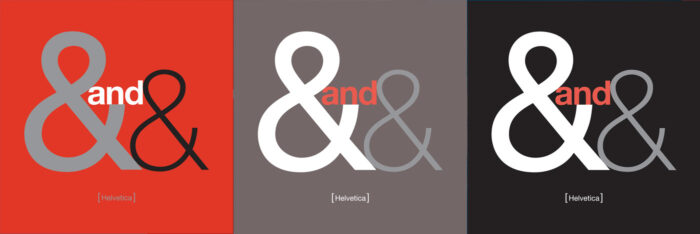
It’s World Ampersand Day! Because there’s a special day for pretty much everything, and because the pretzeled punctuation is lovable enough to grace brand names, paperweights, and calf tattoos alike.
With roots in Roman shorthand, the ligature of “e” and “t” represents the Latin “et,” meaning “and.” After being coopted into English, it became so popular that it made the alphabet. There was just one problem, explains Grammarly:
“When people recited the alphabet, it sounded strange to say, ‘x, y, z, and and.’ Instead, they said, ‘x, y, z, and per se and,’ because per se meant ‘by itself.’”
Say “and per se and” fast and the name makes sense. The words slurred together so often in everyday speech that they became a mondegreen – a new word that springs from prevalent misuse. This one was welcomed into the dictionary in the 1830s.
Since then, it has become common in informal writing, though you’ll also see it in academic citations, artistic titles, computer code, and oh so many brand names.

Here at helveticka, we’re ampersand fans. In fact, the logogram features on merch from our charitable arm, Helveticahaus. In triplicate. As the product description says: “Everyone treated the ampersand as treble clef’s ugly stepsister – until Crate&Barrel embraced it in its corporate logo. And if one symbol for “and” is good enough for Crate&Barrel, then three must be better.”
If you celebrate ampersands every day but especially today, feel free to follow the advice of National Day Calendar (which is responsible for this holiday) and “send friends whose names contain ‘and’ a special note – &y, &rea, Alex&er, Gr&ma.”
If, however, ampersands are among your petty grievances, we get it. It’s the pumpkin spice of punctuation. For you, we have other great T-shirts! Plus this list of reasons to hate the ampersand by Stephen Dedalus Jr., who skewers it with angry panache. Some excerpts:
The ampersand is cute. Dave and Buster’s: not cute. Dave & Buster’s: incredibly cute!
Have you ever tried to write an ampersand? Like, with a pen in your hand? I mean, faithfully capture it, not cheat with some squiggly line. That’s right, it cannot be done.
Did Jane Austen use an ampersand in the titles of any of her novels? No, she did not! Why is that, do you suppose? It’s because she hated the goddamn ampersand!

